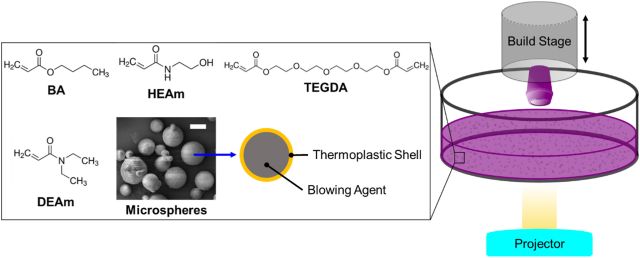
3D-printed polymer foams maintain stiffness and energy dissipation under repeated loading.
Younghoon Kwon, Soyoung E. Seo, Jaejun Lee, Szabolcs Berezvai, Javier Read de Alaniz, Claus D. Eisenbach, Robert M. McMeeking, Craig J. Hawker, Megan T. Valentine. Composites Communications. 37:101453 (2023).
Abstract
Additive manufacturing enables the fabrication of bio-inspired materials possessing intricate architectures across broad length scales leading to systems that are simultaneously stiff, tough, and lightweight. A digital light processing (DLP) strategy was used to additively manufacture polymer foams with controlled porosity through the incorporation of thermally expandable microspheres. Following initial photopolymerization, a subsequent thermal processing step reproducibly allows access to a broad range of foam densities. Using uniaxial compression, we investigated how foaming impacts the mechanics of the composite material, including modulus, Poisson’s ratio, and energy dissipation. It was observed that the 3D-printed foams are remarkably resilient under cyclic loading, with sustained values of both modulus and energy dissipation under repeated loading at large deformations.